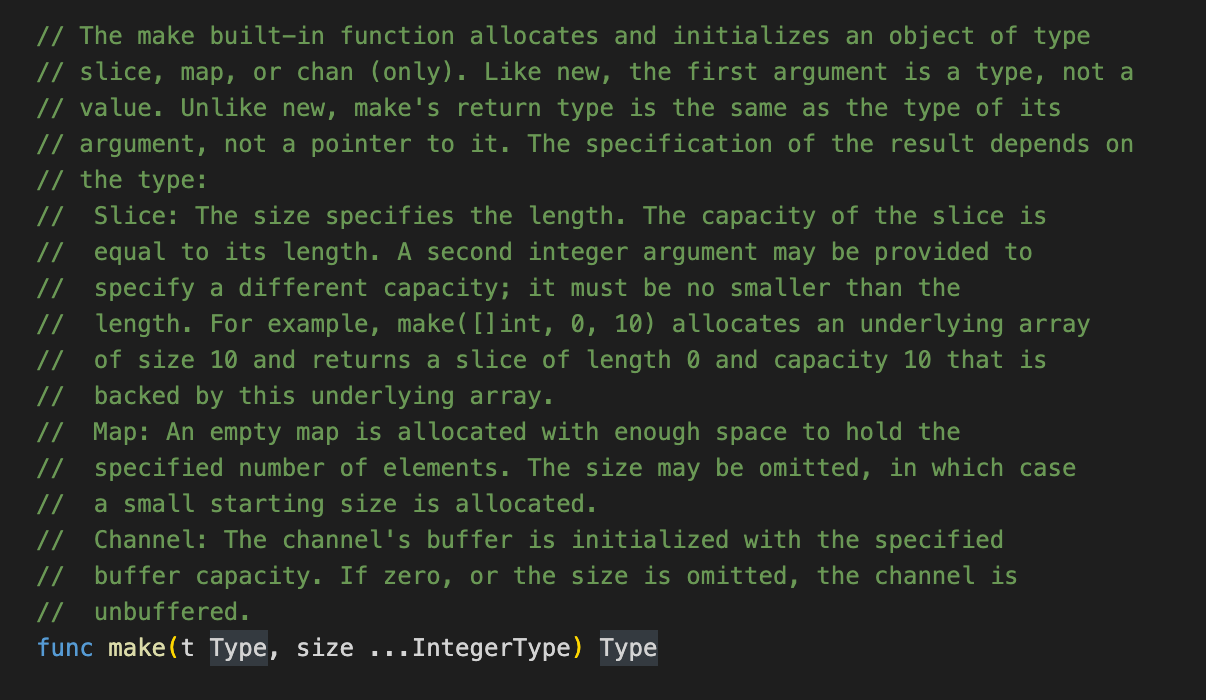golang 变量定义的方式
可以通过 var+变量名称+变量类型 进行声明变量,当我们没有给它赋值的时候,它们的结果是变量类型的零值,例如:
- string 的零值是””,
- int 的零值是0,
- 引用类型的零值是nil。
前面两种类型可以直接使用,但如果把它改成指针,就会报错
package main
import "fmt"
func main() {
var str *string
fmt.Println(str)
*str = "hello world"
}执行结果
<nil>
panic: runtime error: invalid memory address or nil pointer dereference
[signal SIGSEGV: segmentation violation code=0x1 addr=0x0 pc=0x10897d5]
goroutine 1 [running]:
main.main()
/Users/xxxxx/go/src/github.com/xxx/go-demo/gin-demo/main.go:8 +0x55
exit status 2因为对于引用类型的变量,不仅要声明,并且还要给它分配内存。分配内存就是使用 new
new
释义
new 分配内存的内置函数,第一个参数是类型,而不是具体的值,返回值是该类型的指针。分配的值是该类型零值的指针。
package main
import "fmt"
func main() {
var str *string
fmt.Println(str)
str = new(string)
*str = "hello world"
fmt.Println(*str)
}源码实现
底层调用 mallocgc 方法的时候,needzero 传的是 true ,返回值是传入类型零值的指针
func newobject(typ *_type) unsafe.Pointer{
return mallocgc(typ.size,type,true);
}make
释义
make 也是用于内存分配的内置函数
make内置函数分配并初始化一个slice、map或chan类型的对象。
像new函数一样,第一个参数是类型,而不是值。
与new不同,make的返回类型与其参数的类型相同,而不是指向它的指针。结果的取决于传入的类型。
并且 slice在 make 的时候,第二个参数必须传递,也就是切片的长度。否则会编译失败。
源码实现
不同的结构使用的方法不同
// slice
func makeslice(typ *byte, len int, cap int) unsafe.Pointer
func makeslice64(typ *byte, len int64, cap int64) unsafe.Pointer
// map
func makemap64(mapType *byte, hint int64, mapbuf *any) (hmap map[any]any)
func makemap(mapType *byte, hint int, mapbuf *any) (hmap map[any]any)
func makemap_small() (hmap map[any]any)
// chan
func makechan64(chanType *byte, size int64) (hchan chan any)
func makechan(chanType *byte, size int) (hchan chan any)
